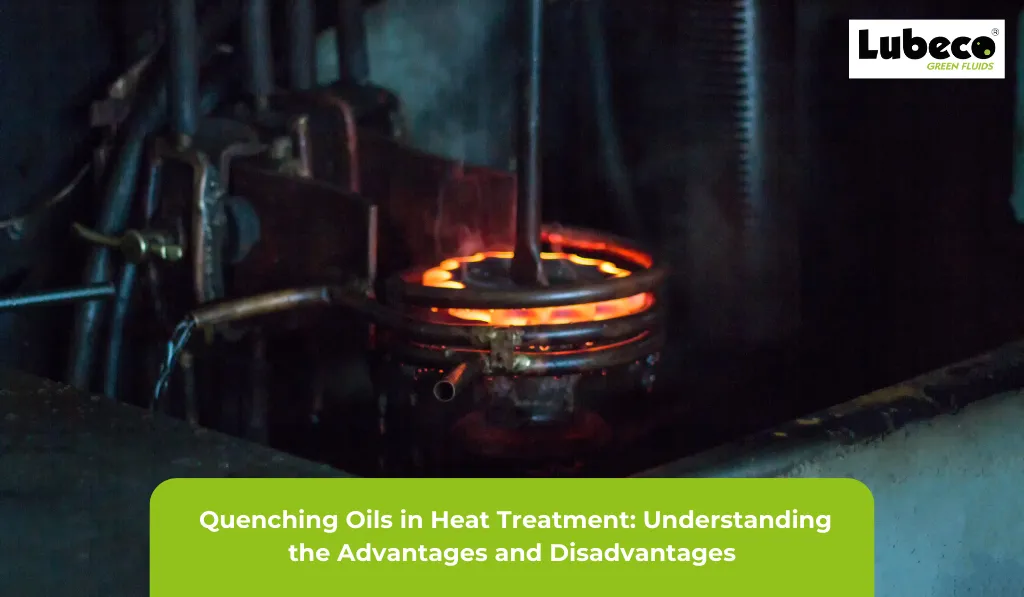Introduction
Heat treatment is a critical process in metallurgy, enhancing the mechanical properties of metals through controlled heating and cooling. Central to this process is the use of quenching oils, which play a pivotal role in achieving the desired material characteristics. In this blog, we will delve into the advantages and disadvantages of quenching oils, shedding light on their impact on the effectiveness and outcomes of heat treatment processes.
Advantages of Quenching Oils
- Rapid Cooling Rate: Quenching oils excel in providing a rapid and controlled cooling rate during the quenching process. This is crucial for achieving specific material properties, such as hardness and strength. The ability to control the cooling rate helps prevent undesired phase transformations and ensures uniformity in the material structure.
- Minimization of Distortion: Unlike some alternative quenching mediums, such as water, quenching oils contribute to minimizing distortion and cracking in the metal workpiece. The controlled cooling provided by quenching oils reduces thermal shock, which can be detrimental to the structural integrity of the material.
- Improved Hardenability: Quenching oils enhance the hardenability of metals, allowing for the development of a hardened surface layer while maintaining a more ductile core. This controlled transformation ensures that the material achieves the desired hardness without becoming excessively brittle.
- Reduced Quenching Severity: Compared to water or brine, quenching oils generally offer a less severe quenching environment. This can be advantageous for materials that are more sensitive to extreme cooling rates, providing a balance between achieving desired material properties and minimizing the risk of cracking.
- Enhanced Surface Finish: Quenching oils contribute to a smoother surface finish on the workpiece after the heat treatment process. This is particularly important in applications where the final appearance and surface quality of the metal are critical, such as in the production of precision components.
- Reduced Surface Oxidation: Quenching oils create a protective barrier on the metal surface during the cooling process, reducing the likelihood of oxidation. This is particularly advantageous for materials like steel, where maintaining a clean and oxidation-free surface is crucial for subsequent processing or final product quality.
- Uniform Cooling Across Complex Shapes: Quenching oils exhibit excellent wetting properties, allowing them to penetrate and cool complex shapes and intricate geometries more uniformly than some alternative quenchants. This is essential for achieving consistent mechanical properties throughout the entire workpiece.
- Versatility in Application: Quenching oils are versatile and can be tailored to suit a wide range of materials and heat treatment processes. The ability to adjust the composition of quenching oils makes them adaptable to various alloys and applications, providing flexibility in the manufacturing of diverse components.
Disadvantages of Quenching Oils:
- Flammability and Safety Concerns: One significant drawback of quenching oils is their flammability. The risk of fire during the heat treatment process poses safety concerns in industrial settings. Special precautions and safety measures, such as proper ventilation and fire-resistant equipment, are essential when using quenching oils.
- Environmental Impact: Many quenching oils are petroleum-based, posing environmental challenges due to their potential for contamination and disposal issues. The disposal of used quenching oils requires adherence to environmental regulations, and improper disposal can lead to soil and water pollution.
- High Operating Costs: Quenching oils, especially high-performance variants, can be relatively expensive. The cost of acquiring and maintaining quenching oils, along with the need for efficient filtration systems to remove contaminants, contributes to higher operating costs in heat treatment processes.
- Limited Cooling Capacity: In comparison to water or polymer quenchants, quenching oils have a limited cooling capacity. This can be a disadvantage when dealing with materials that require extremely rapid cooling for optimal hardening. In such cases, alternative quenching mediums may be more suitable.
- Need for Post-Quenching Processes: After quenching with oils, it is often necessary to perform additional processes, such as tempering, to achieve the desired combination of hardness and toughness. This adds complexity to the overall heat treatment process and requires careful consideration in the planning and execution stages.
Conclusion:
In the realm of heat treatment, the choice of quenching oils involves a careful balance between the advantages and disadvantages associated with their use. While quenching oils offer controlled cooling, minimized distortion, and improved hardenability, the challenges of flammability, environmental impact, and high operating costs should not be overlooked. As industries continue to advance, researchers and engineers are exploring alternative quenching mediums that address these drawbacks while maintaining the essential benefits of effective heat treatment. Ultimately, the selection of quenching oils should align with the specific requirements of the materials and applications in question, guided by a commitment to safety, efficiency, and environmental responsibility.










